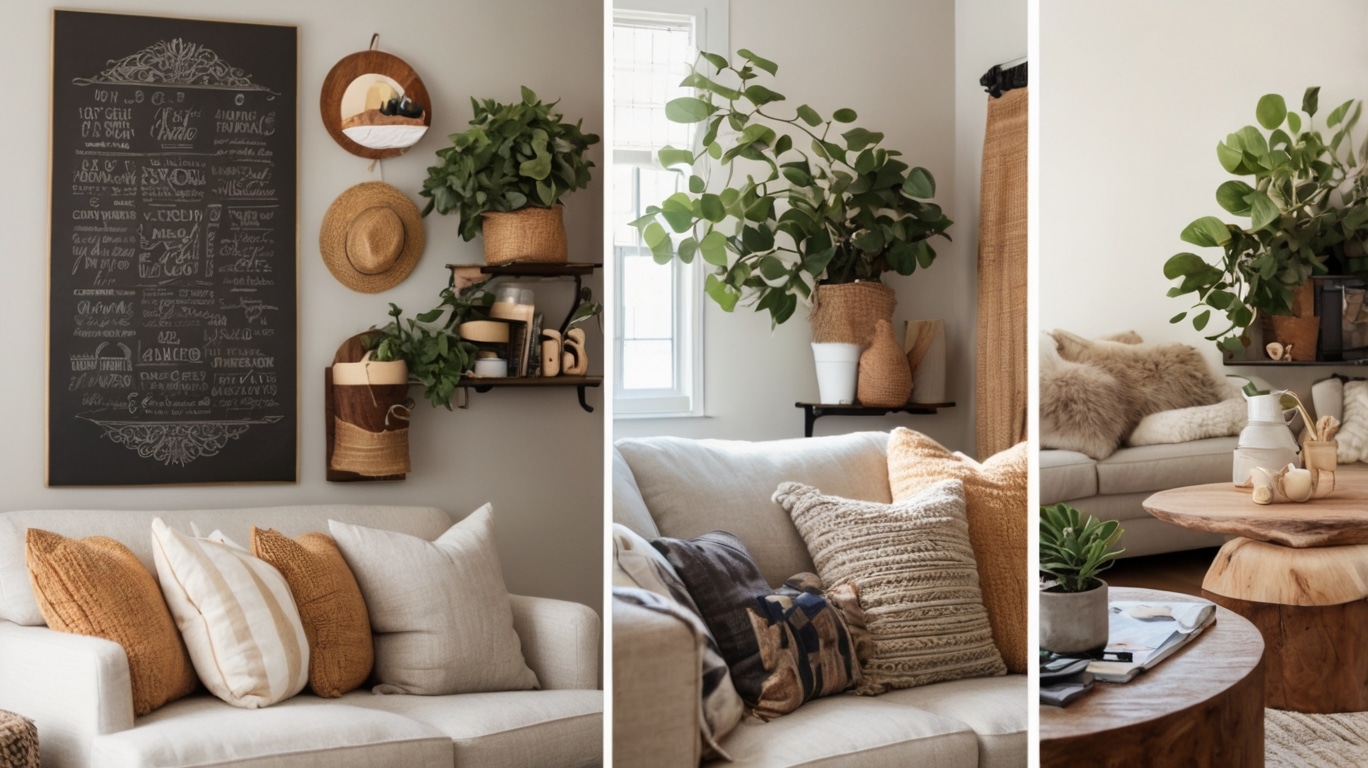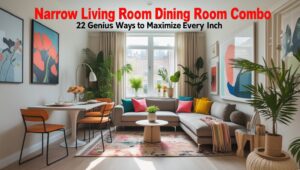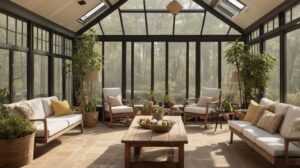Above Couch Wall Decor can transform your living space into a stylish sanctuary. Imagine walking into a room where the walls tell a story, reflecting your personality and taste. Whether you’re looking to make a bold statement or create a cozy atmosphere, the right decor can elevate your home in ways you never thought possible.
Are you ready to unlock the potential of that empty wall above your couch? In this article, we’ll explore a variety of creative ideas and tips that will inspire you to revamp your space. Let’s dive in and discover how simple decor choices can create a stunning focal point in your home!
In this article, I’ll share 23 genuinely stylish ideas that will completely revolutionize your living room. These aren’t your standard “hang a mirror and call it done” suggestions, but thoughtful approaches that consider scale, personality, and the delicate balance between statement-making and livable. Let’s dive in and give that sad blank wall the glow-up it deserves.
1. Oversized Statement Art
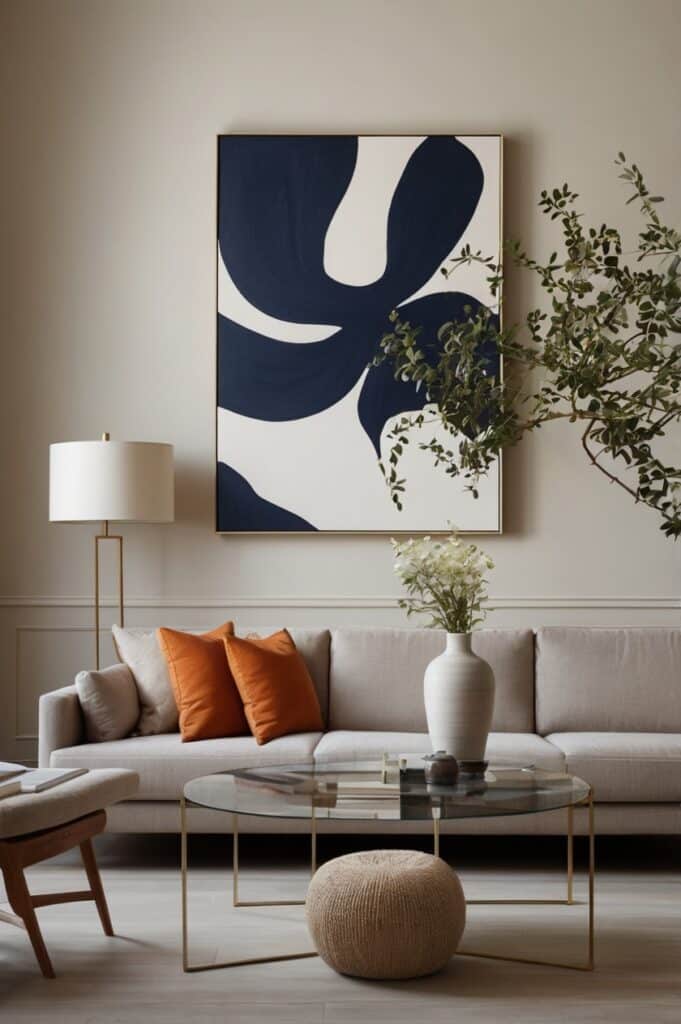
Nothing makes a bolder declaration than a single, massive piece of art above your sofa. The key here is scale go bigger than you think you should.
The ideal piece should be approximately two-thirds the width of your couch, creating visual balance without looking skimpy. Height matters too; the bottom edge should hang 8-10 inches above the sofa back, not floating awkwardly high on the wall. I recently installed a client’s 60×40 abstract canvas that literally transformed their living room from “nice” to “wow”—the proportions were just that impactful.
Color is where you can really make this sing. Either pull a shade from your existing decor for cohesion or go completely unexpected for a jolt of energy that reframes everything else in the room.
2. Gallery Wall with Personality
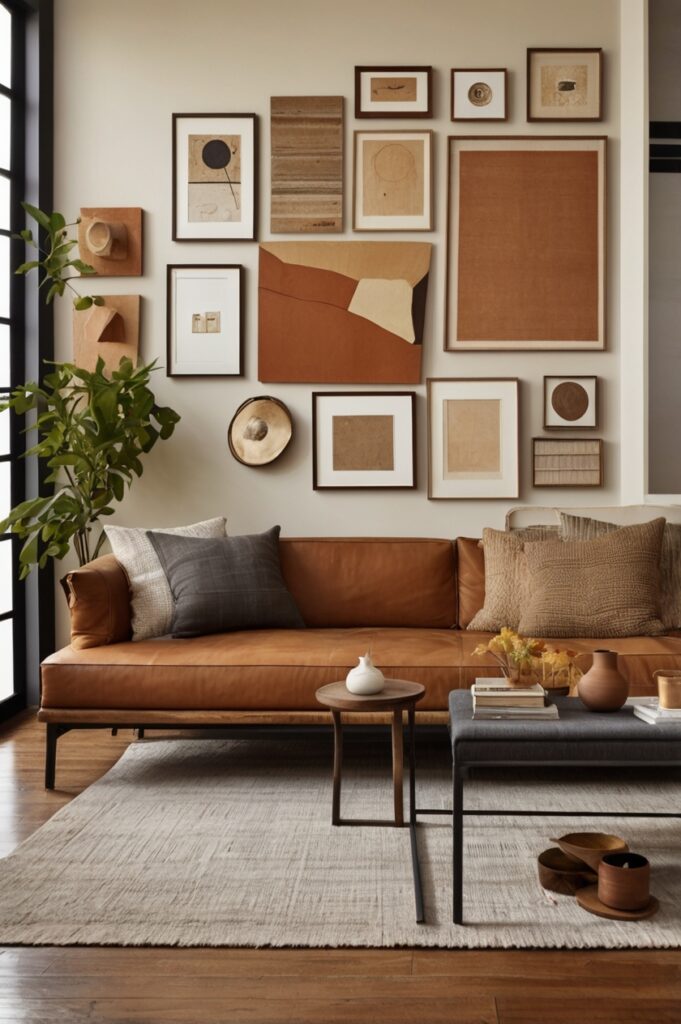
Gallery walls remain enduringly popular because they’re infinitely customizable and can evolve with your taste. The trick is creating a collection that feels curated rather than chaotic.
Start with a unifying element—whether that’s matching frames, a consistent color palette, or a thematic connection between pieces. The layout should follow the general shape of your sofa, extending slightly beyond its edges for a custom look. My favorite gallery walls incorporate unexpected elements beyond just framed prints—think mounted sculptures, small mirrors, or even beautiful textile pieces that add dimension.
Don’t be afraid of asymmetry; some of the most compelling gallery walls have an organic, collected-over-time quality that perfectly balances visual weight without perfect symmetry. Just remember to maintain enough negative space between pieces so each can be appreciated individually.
3. Floating Shelves with Styled Vignettes
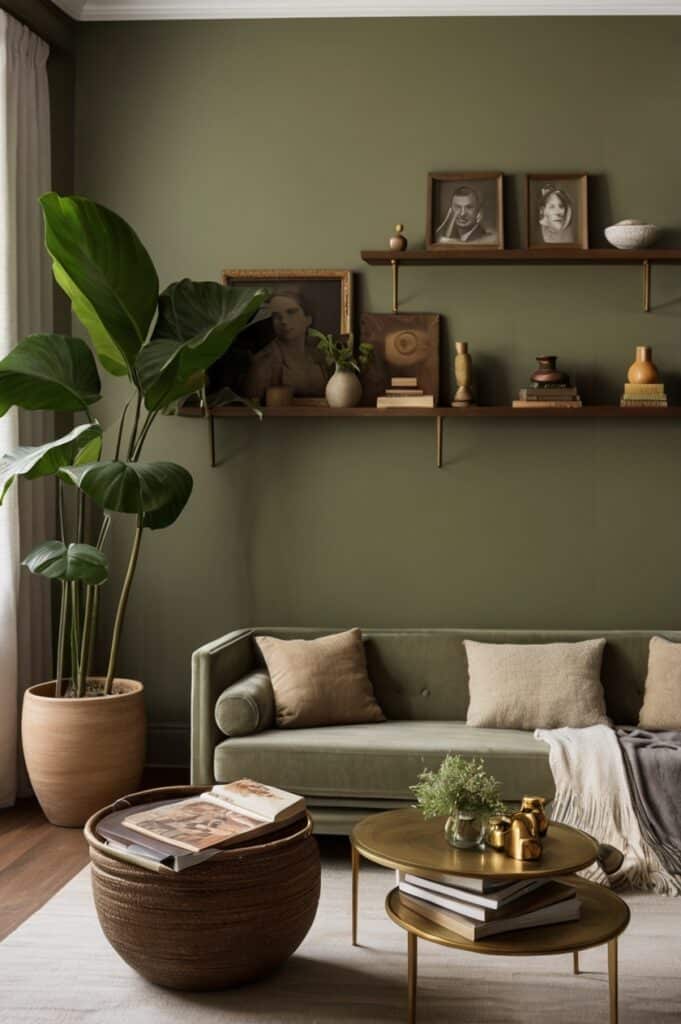
Floating shelves above a couch create architectural interest while providing flexible display space that can change with seasons or moods. They’re the perfect solution for the decoratively indecisive.
Install two or three substantial shelves that span most of the sofa’s width, keeping them deep enough (at least 6 inches) to accommodate meaningful objects rather than just tiny tchotchkes. The spacing between shelves should feel intentional—I often recommend varying the distances slightly for a more dynamic arrangement. My client Beth was absolutly thrilled with how her walnut shelves transformed her apartment’s rental-white walls.
When styling, think in terms of layered vignettes rather than lined-up objects. Combine art pieces leaned against the wall with smaller objects in front, incorporating varied heights, textures, and a touch of greenery for life. The beauty is being able to refresh the entire look seasonally without any new holes in your walls.
4. Dramatic Mirror Arrangement
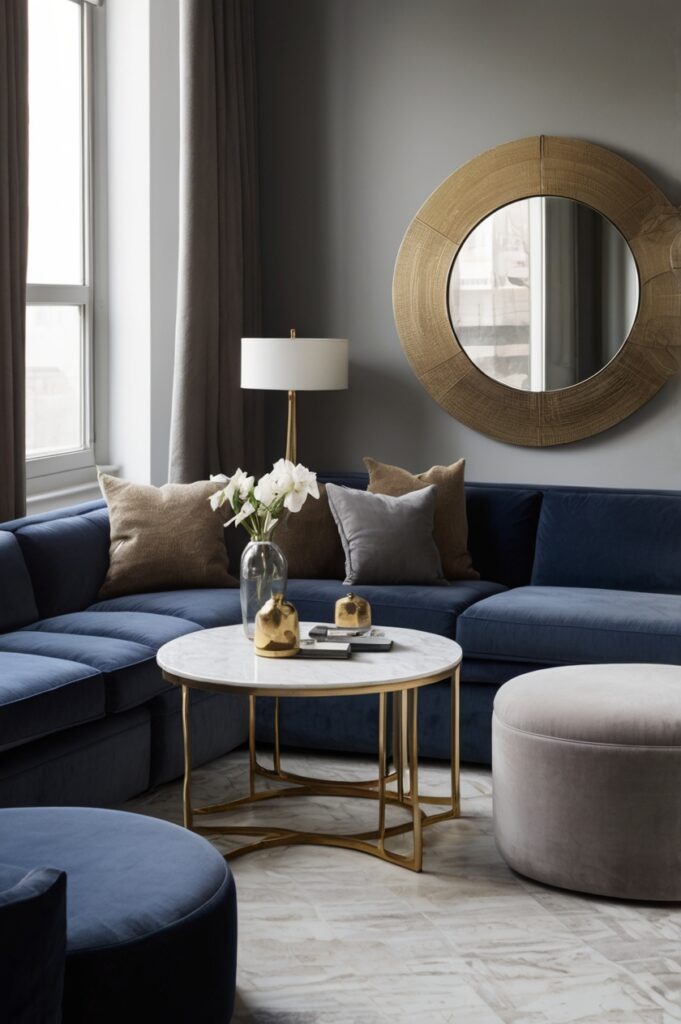
Mirrors above couches aren’t just decorative they’re transformative for rooms that need more light or the illusion of additional space. But forget the predictable single oval mirror.
Consider a collection of different sized circular mirrors arranged in a constellation-like pattern, or a series of identical mirrors lined up in a row for architectural impact. The reflective surfaces bounce light around while creating a sculptural element that stands on its own. I installed a triptych of antique gold sunburst mirrors for a client whose dark living room suddenly felt twice as bright and infinitely more interesting.
Just be mindful of what the mirrors will actually reflect—ideally something worth looking at, like a beautiful light fixture or an opposite wall with interesting decor, not just a blank ceiling or cluttered area.
5. Textile Wall Hangings
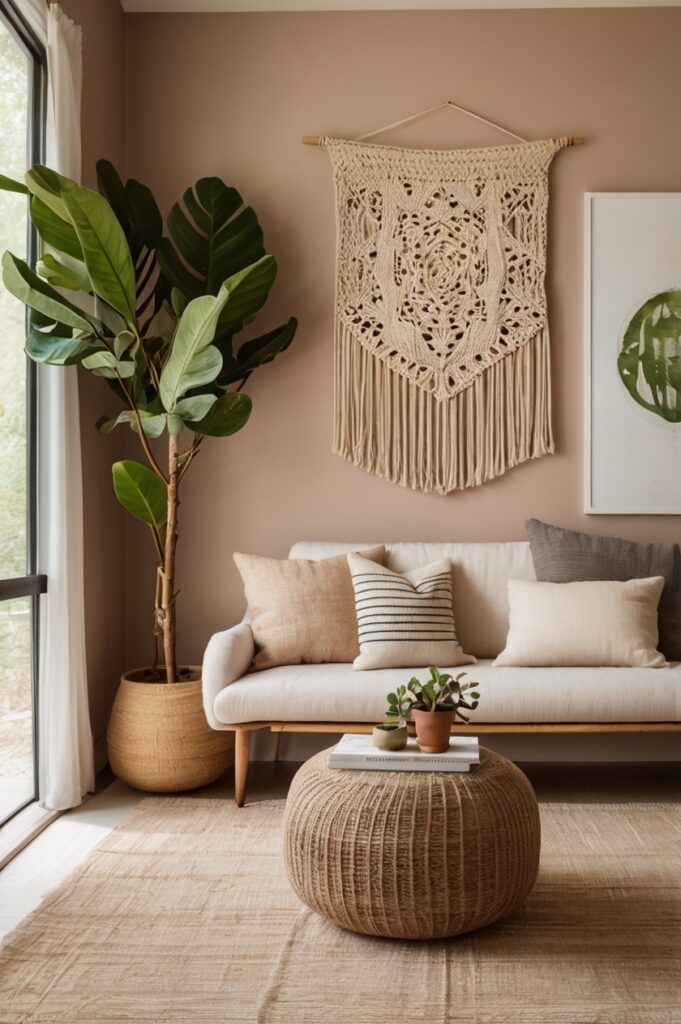
Textiles bring unmatched warmth and acoustic benefits to living spaces while offering rich visual texture that flat art simply can’t deliver. This approach feels especially fresh in contemporary interiors.
Vintage rugs, macramé pieces, or woven wall hangings introduce tactile dimension and often become instant conversation pieces. The organic nature of handcrafted textiles softens rooms with too many hard surfaces or straight lines. I’m particularly fond of indigo mud cloths stretched on frames—they bring graphic punch and cultural depth to otherwise conventional spaces.
Scale remains crucial; choose pieces substantial enough to anchor the sofa without disappearing into the wall. Colors can be either complementary to your existing palette or introduce a controlled contrast that enlivens the entire room.
6. Architectural Salvage Elements
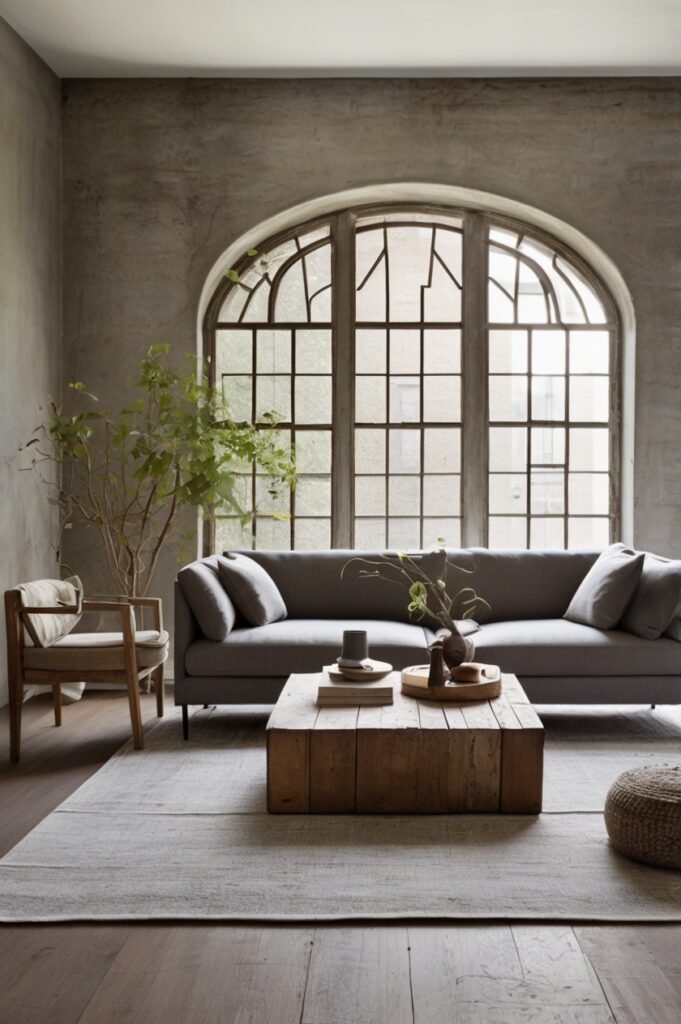
Architectural salvage pieces bring instant character and history to even the newest constructions. They satisfy our craving for authenticity in an age of mass production.
Consider mounting vintage window frames, decorative iron gates, or carved wooden panels above your sofa. These elements add texture and visual weight while often costing less than comparable-sized artwork. One of my clients scored an incredible set of weathered shutters at a demolition sale for $75 that now serves as the stunning focal point of their entire living room.
The beauty of architectural elements is their inherent dimensionality—they project from the wall, casting interesting shadows and creating depth that flat art cannot. Just ensure proper mounting; these pieces are often heavier than standard artwork and require appropriate hardware and wall anchors.
7. Wallpaper or Mural Accent
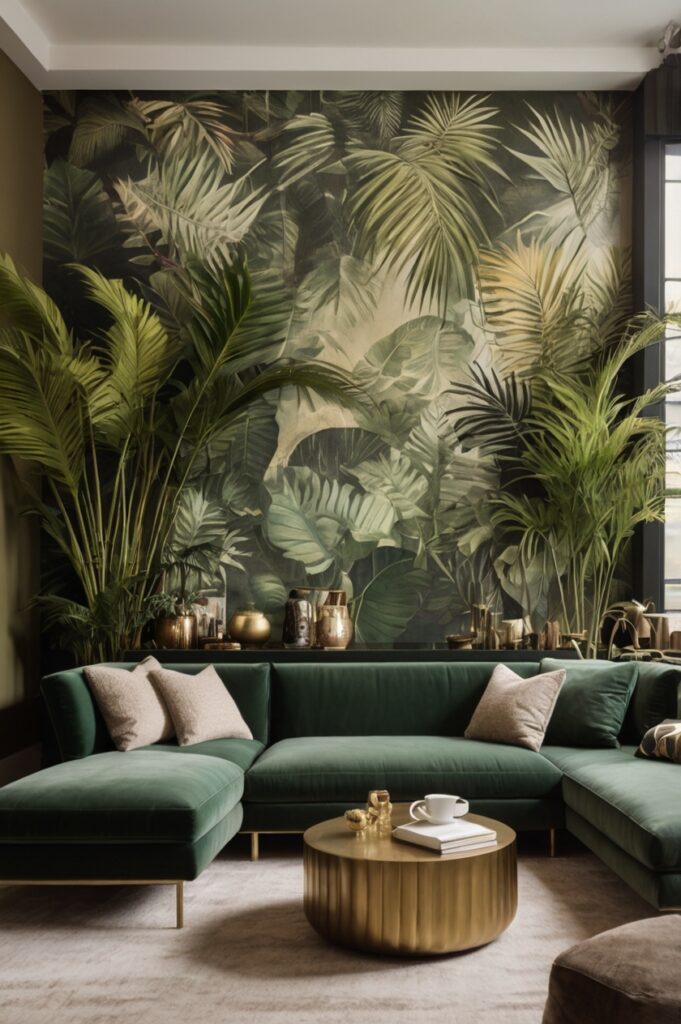
If you’re hesitant to commit to wallpapering an entire room, the wall behind your sofa offers the perfect opportunity for a dramatic accent that frames your seating area.
Apply bold wallpaper or a mural precisely to the width of your sofa plus 12-18 inches on each side for a tailored, intentional look. This creates an instant focal point while requiring much less material than a full room installation. I’m obsessed with how my client’s botanical mural installation literally makes her living room feel like a secret garden—all without a single actual plant to maintain.
Today’s peel-and-stick options make this approach accessible even for renters or the commitment-phobic. Choose patterns that coordinate with your overall color scheme but don’t shy away from dramatic scale or unexpected motifs in this limited application.
8. Plate Collections or Wall Sculptures
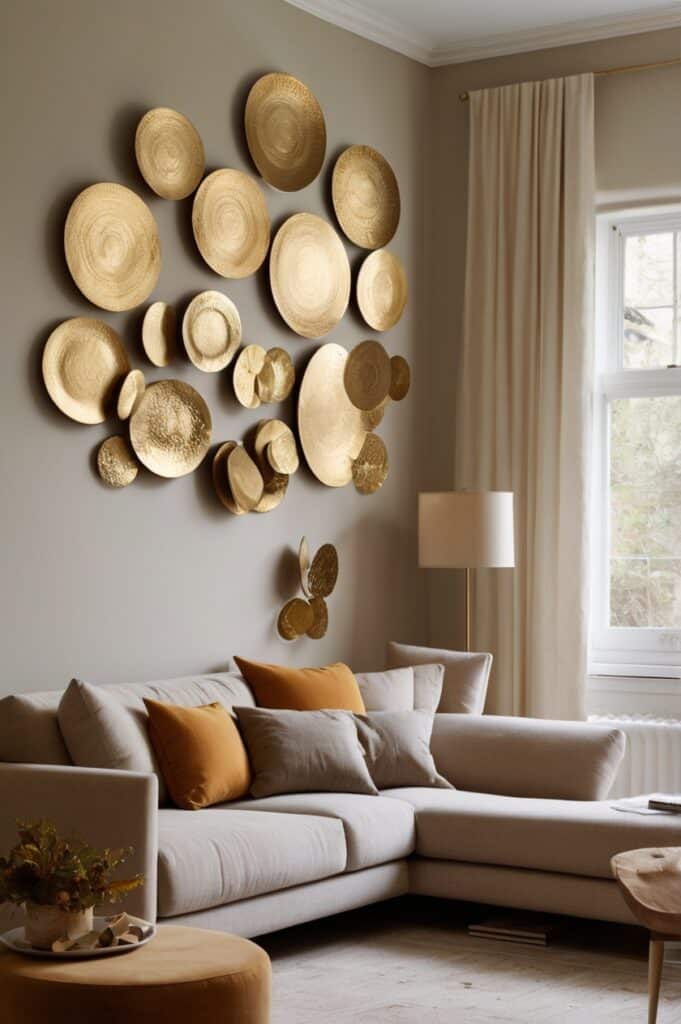
Three-dimensional wall decor creates dynamic visual interest through actual depth rather than just implied perspective. It’s a refreshing alternative to flat artwork.
Curated plate collections, especially in monochromatic schemes, create sophisticated impact while showcasing either family heirlooms or strategic thrift finds. Metal wall sculptures, whether vintage or contemporary, introduce linear elements and cast intriguing shadows that change throughout the day. My recent installation of hammered brass discs in varying sizes transformed a client’s boring beige wall into something that literally shimmers as people move through the space.
The arrangement is crucial—map it out on the floor first or create paper templates to experiment with placement before committing. The composition should generally follow the horizontal line of your sofa while incorporating enough variation to remain visually engaging.
9. Oversized Clock or Sculptural Object
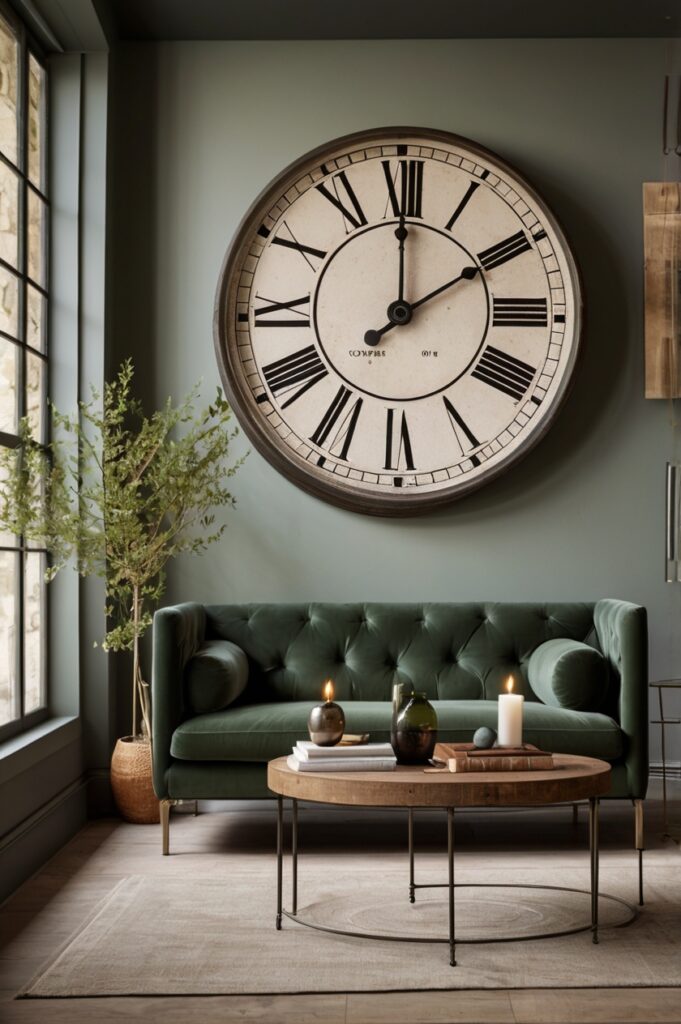
Sometimes a single statement piece with presence can be more impactful than a busy arrangement. This approach works particularly well in minimalist or uncluttered spaces.
Consider an oversized vintage or industrial clock face, a large sculptural sunburst, or an architectural fragment mounted centrally above the sofa. The scale should be substantial—at least 30 inches in diameter for most standard sofas—to avoid looking diminutive against the furniture. My favorite recent installation was a 42-inch wooden gear mold from an old factory that brings industrial character to an otherwise traditional living room.
The key to making a single piece work is ensuring it has enough visual weight and interest to stand alone. Look for unusual materials, dimensional elements, or dramatic scale to create a focal point that doesn’t need supporting players.
10. Horizontal Wooden Feature
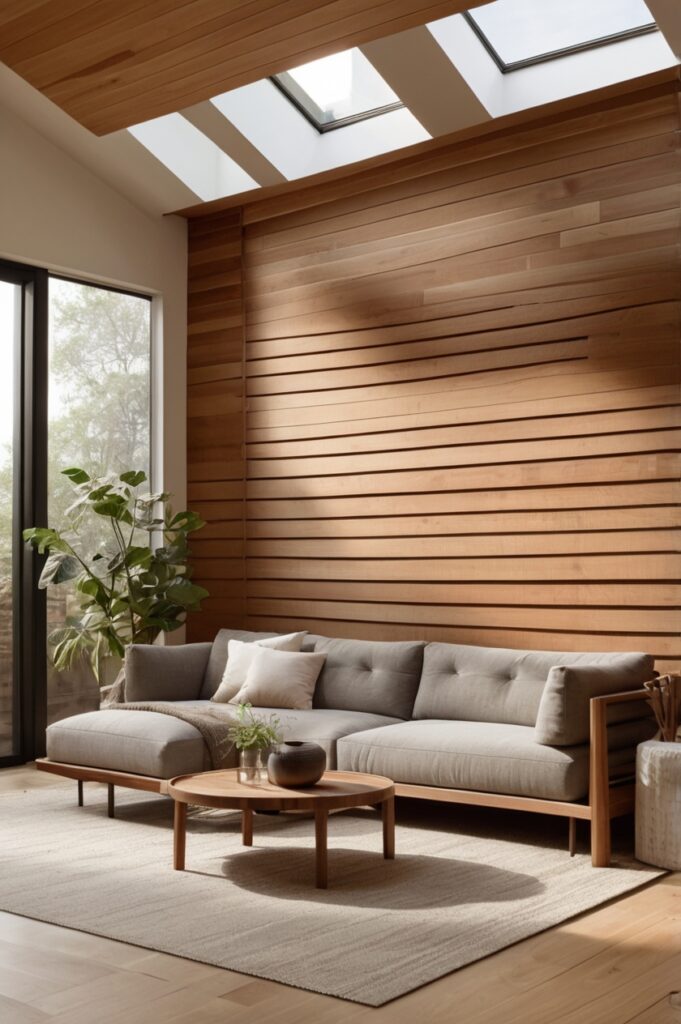
Linear wooden elements bring warmth and organic texture while emphasizing the horizontal line of your sofa. This architectural approach feels both contemporary and timeless.
Consider installing reclaimed wood planks, shiplap, or even slim wooden slats across the wall behind your sofa. The installation can either match the sofa’s width exactly or extend wall-to-wall for different effects. I’m particularly fond of the slatted wood feature we installed for a client using varying widths of cedar—the subtle aroma and rich color variation brought life to their formerly sterile white box of a living room.
The beauty of this approach is its ability to work with virtually any decor style, from rustic to scandinavian minimalist to mid-century. The wood can be left natural, whitewashed, or stained to complement your specific color palette.
11. Suspended Installation
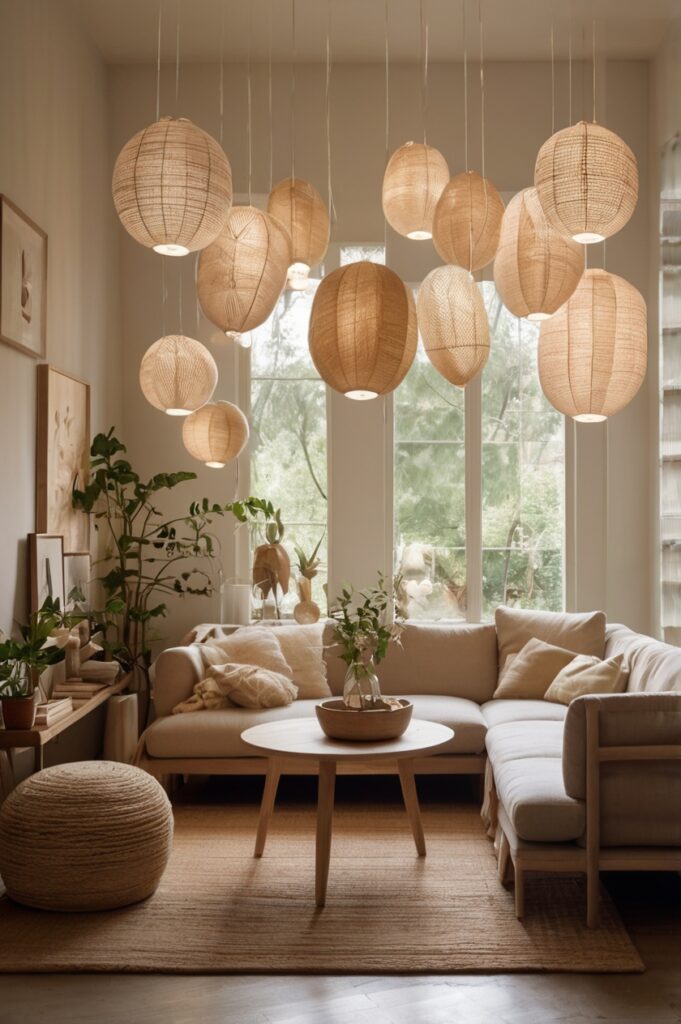
Taking decor into three-dimensional space creates unexpected drama and utilizes the often-forgotten area between your wall and ceiling. This approach is for the truly design-adventurous.
Consider hanging a collection of paper lanterns, woven baskets, or even vintage objects in a clustered arrangement that hovers above and behind your sofa. The key is creating a composition that relates to the sofa’s proportions while allowing enough headroom for practical seating. My client Jaime was absolutely stunned by how her collection of thrifted basket bottoms, mounted with nearly invisible fishing line, transformed her apartment’s energy.
These installations create magical shadow play when lit from various angles and offer a completely custom solution that no one else will have. They do require more planning and installation effort but deliver unmatched visual impact in return.
12. Large-Scale Photography
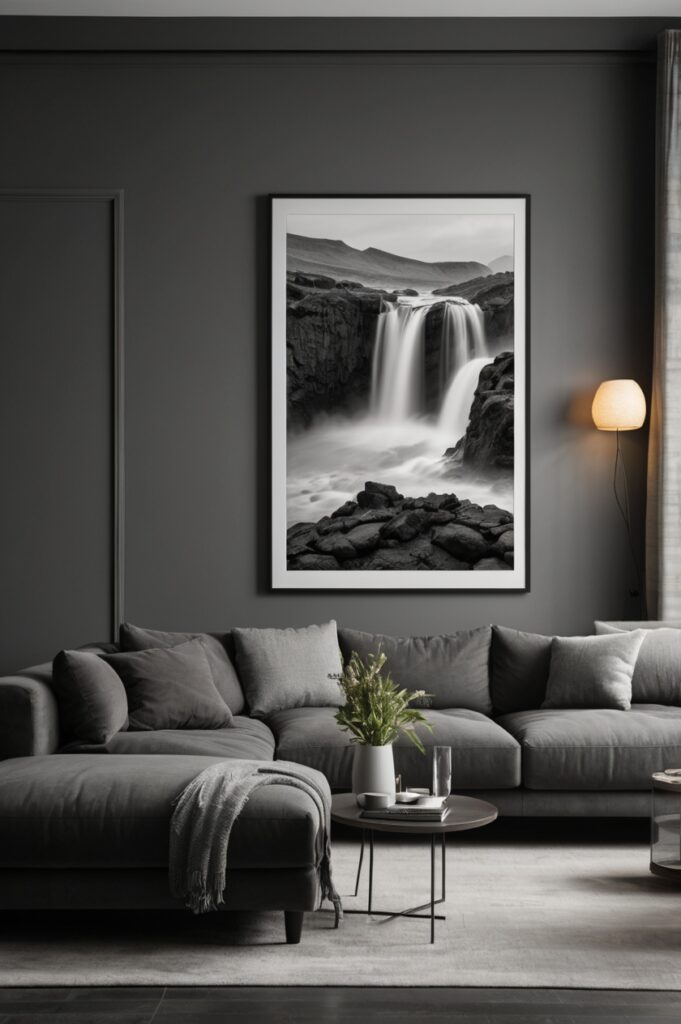
Oversized photographic prints bring windows to other worlds into your living space. They’re particularly effective in smaller rooms that benefit from the depth that perspective provides.
Black and white landscape photographs at dramatic scale create sophisticated focal points that work with virtually any color scheme. Alternatively, vibrant color photography can introduce precisely controlled hues that pull together diverse elements in your decor. I recently installed a client’s personal vacation photograph, professionally enlarged and framed, that not only serves as stunning decor but also triggers happy memories of their significant travels.
The mounting and framing are crucial decisions here—floating in frameless glass for contemporary spaces, or substantial wood frames for more traditional rooms. Either way, professional printing at proper resolution is essential for images that will be viewed at such close range.
13. Vertical Panel Arrangement
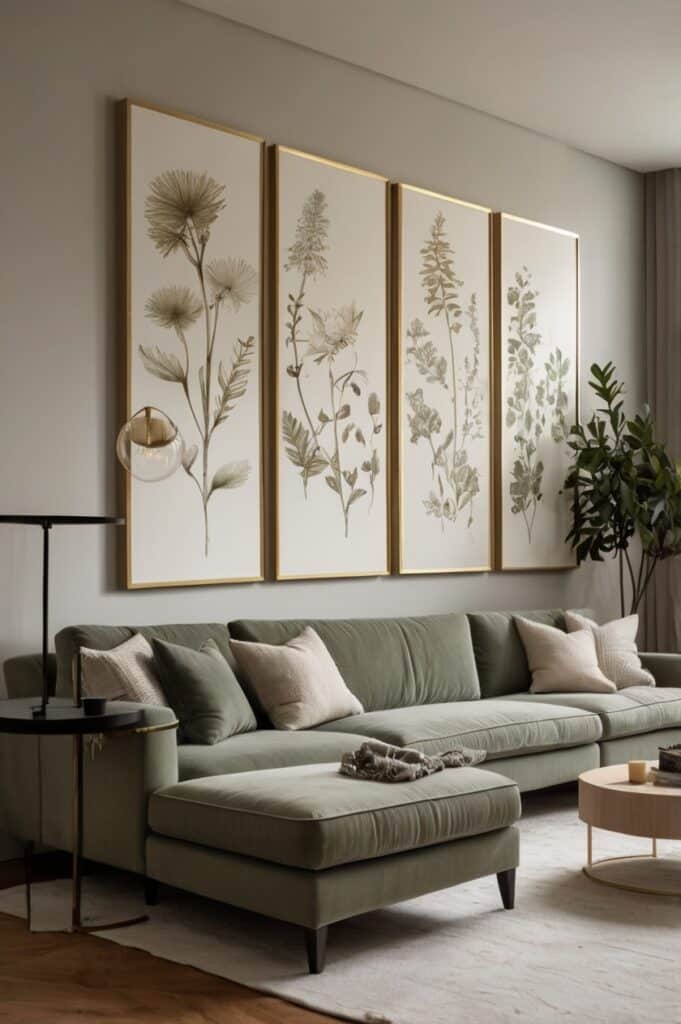
While most sofa arrangements emphasize horizontal lines, a series of vertical panels creates pleasing rhythm and can visually raise ceiling heights. This approach feels architecturally intentional rather than merely decorative.
Consider three to five narrow canvas prints, framed textile panels, or even painted wood boards arranged with minimal spacing between. The heights can be identical for a more formal look or slightly varied for contemporary spaces. I’m obsessed with how the set of linen panels we custom-stretched for a client’s sofa wall brought subtle texture while maintaining the room’s serene vibe.
This arrangement works particularly well for smaller walls where a single large piece might feel overwhelming. The vertical orientation naturally draws the eye upward, creating the impression of higher ceilings in spaces that need that visual lift.
14. Dimensional Letter Art or Signage
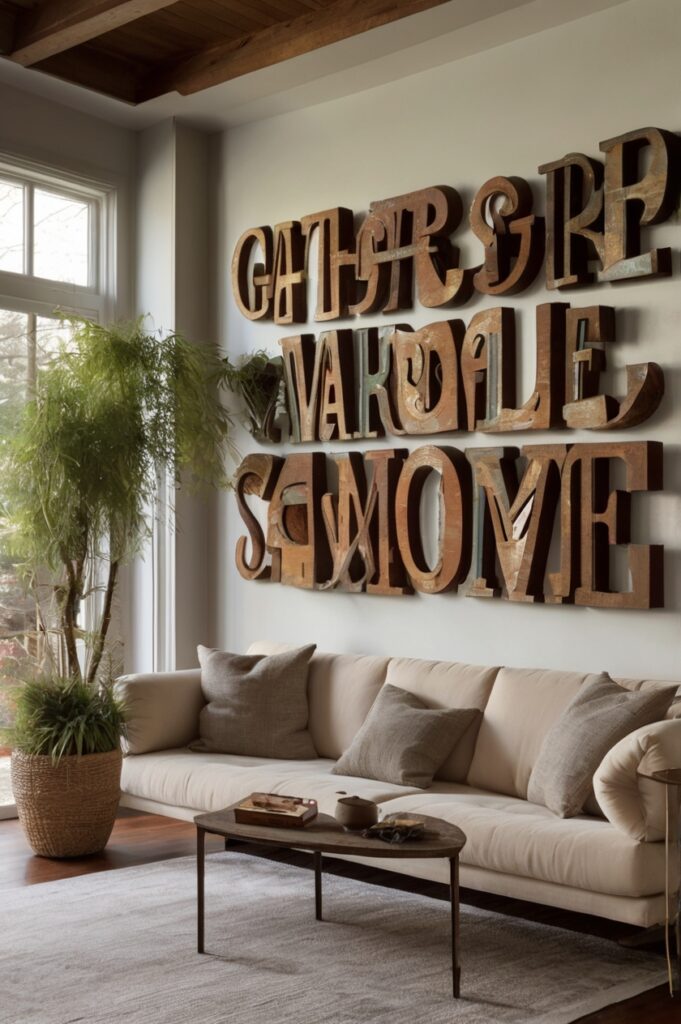
Typography brings both visual interest and personal meaning to living spaces. It’s decor with something to say—literally.
Consider vintage metal letters, neon phrases, or custom word art that reflects your family name, a meaningful quote, or simply a vibe you want to cultivate. Scale remains important—the composition should relate proportionally to your sofa without appearing either too small or overwhelmingly large. My favorite installation was a client’s custom “all together now” phrase in mixed vintage letters that perfectly captured their home’s gathering-place energy.
The style of the typography should complement your overall aesthetic—industrial salvage letters for modern farmhouse spaces, sleek dimensional acrylic for contemporary rooms, or handcrafted wooden letters for more organic interiors.
15. Hanging Plants or Living Wall
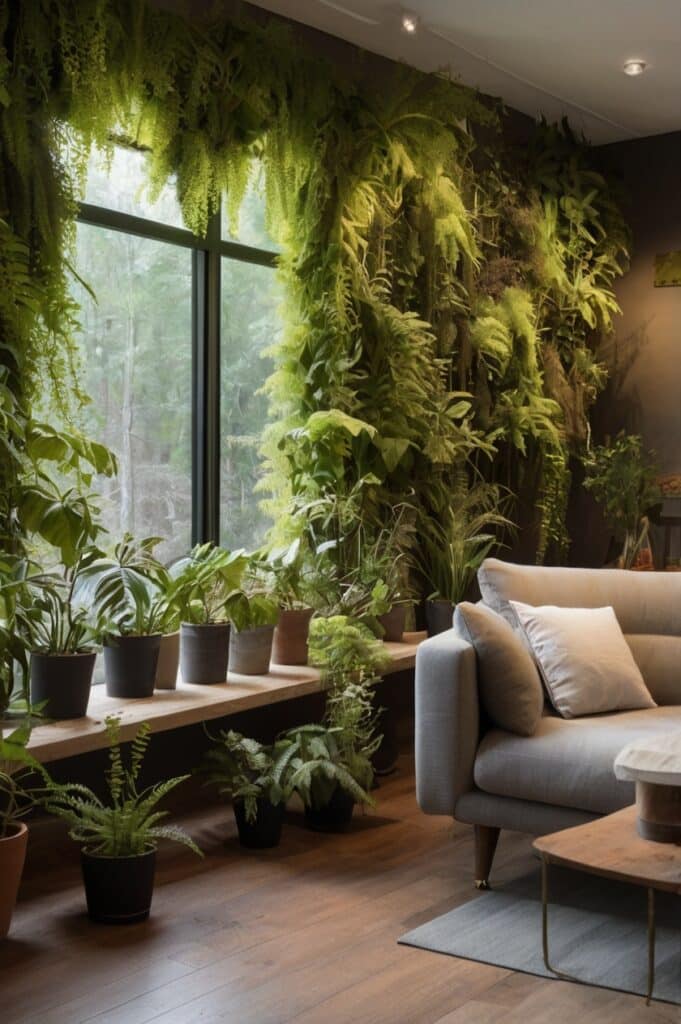
Bringing living elements to your walls creates undeniable energy and connects indoor spaces with nature. This biophilic approach has proven benefits for wellbeing beyond mere aesthetics.
Install a series of hanging planters at varying heights, a structured plant wall system, or even mounted staghorn ferns that grow directly on boards. The organic shapes and inevitable slight movement create dynamic interest that static decor simply cannot match. I transformed a client’s dark sofa wall with a constellation of photos plants in brass containers—the trailing vines created a living tapestry that literally grew more beautiful over time.
Consider your natural light carefully before committing to this approach, choosing plant varieties appropriate for your specific conditions. If natural light is insufficient, dedicated grow lights can be incorporated discreetly into your scheme.
16. Framed Textile Collection
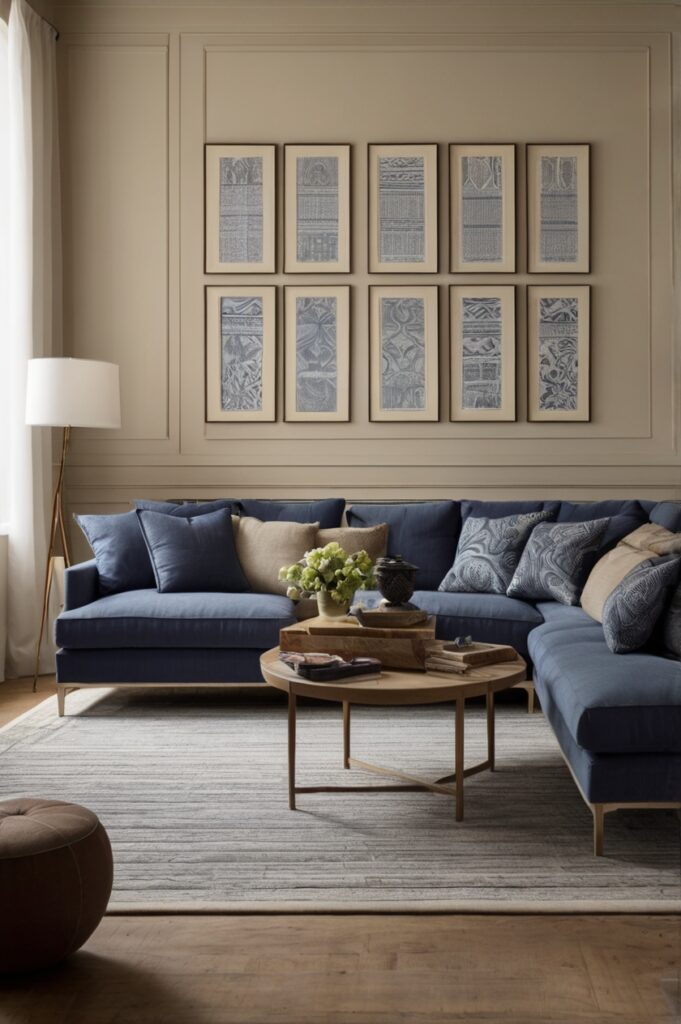
Textiles under glass combine the color and pattern of fabric with the structure and protection of traditional framing. This approach brings rich texture while maintaining a polished presentation.
Frame vintage scarves, handwoven textiles from your travels, or even meaningful clothing items like a child’s special outfit or grandmother’s handkerchief. Creating a cohesive collection through either color palette or thematic connection allows diverse pieces to work together harmoniously. My client’s collection of framed batik samples from their years living in Indonesia creates a deeply personal gallery that sparks conversation while honoring their experiences.
The framing approach can range from simple floating mounts that showcase the entire textile to more formal matted presentations depending on your overall aesthetic. Either way, UV-protective glass is essential to prevent fading of these often-delicate materials.
17. Woven Wood or Bamboo Installation
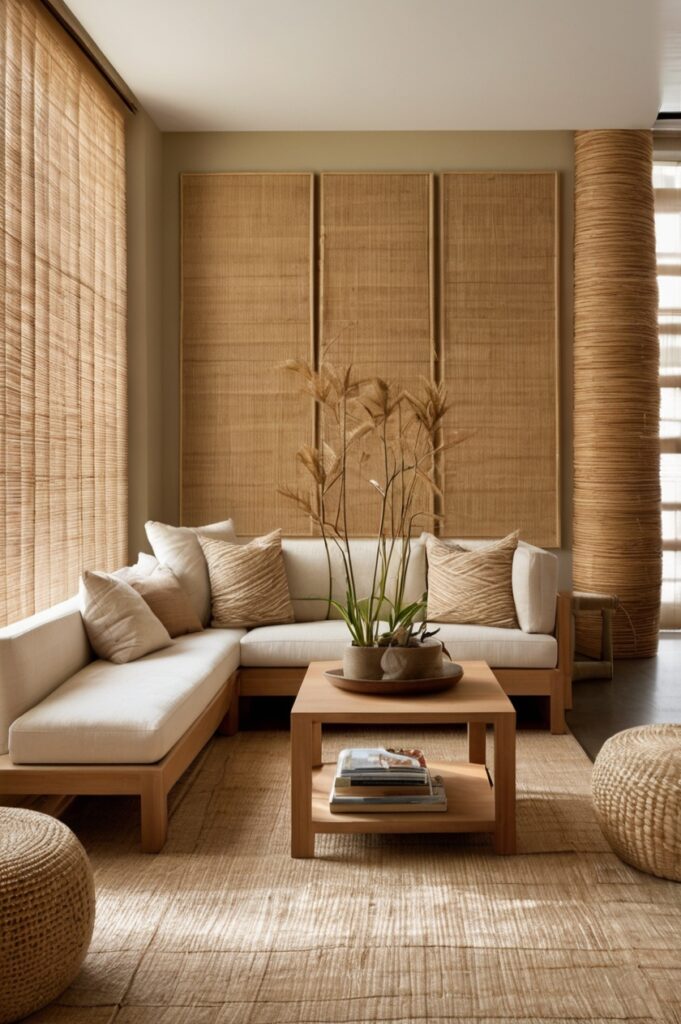
Natural materials in unexpected applications bring organic texture and environmental consciousness to contemporary spaces. They bridge the gap between structured design and natural elements.
Consider mounting bamboo poles horizontally, arranging woven reed panels, or installing sections of decorative rattan screens above your sofa. The linear elements create rhythm while the natural materials add warmth to spaces that might otherwise feel too sleek or impersonal. I’m still amazed at how my client’s split bamboo installation transformed their concrete-walled condo from cold to cozy without sacrificing their minimal aesthetic.
These materials are typically lightweight, making installation less challenging than heavier alternatives. They can be left natural or painted to either blend with your wall color or stand out as a deliberate design element.
18. Backlit Panel or Lightbox Feature
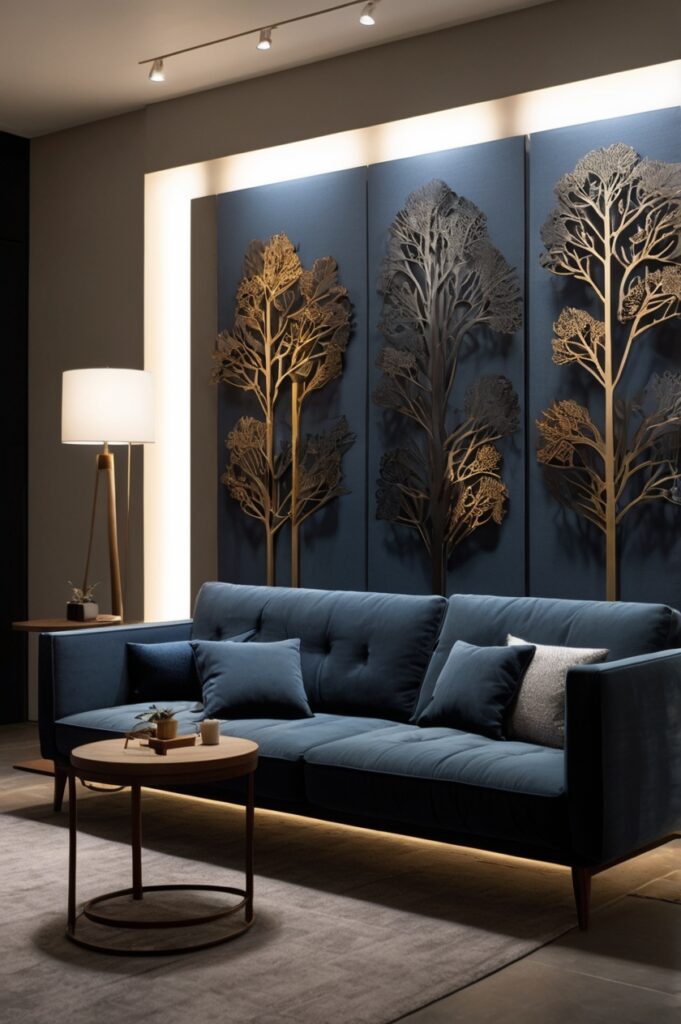
Incorporating light directly into your wall decor creates magical ambiance while serving as both art and illumination. This approach works particularly well in rooms used primarily in evening hours.
Consider installing a stretched fabric panel with LED lighting behind it, a series of decorative laser-cut panels that project patterned light, or even a custom lightbox displaying a translucent image. The soft glow creates a welcoming atmosphere while the decorative element stands on its own even when unlit. My client was absolutely blown away by how their backlit mountain silhouette panel transformed their media room’s entire mood.
This approach requires more planning and usually professional installation for electrical components, but the dramatic result justifies the additional effort. Dimmable options offer flexibility for different activities and moods.
19. Woven Wall Tapestry
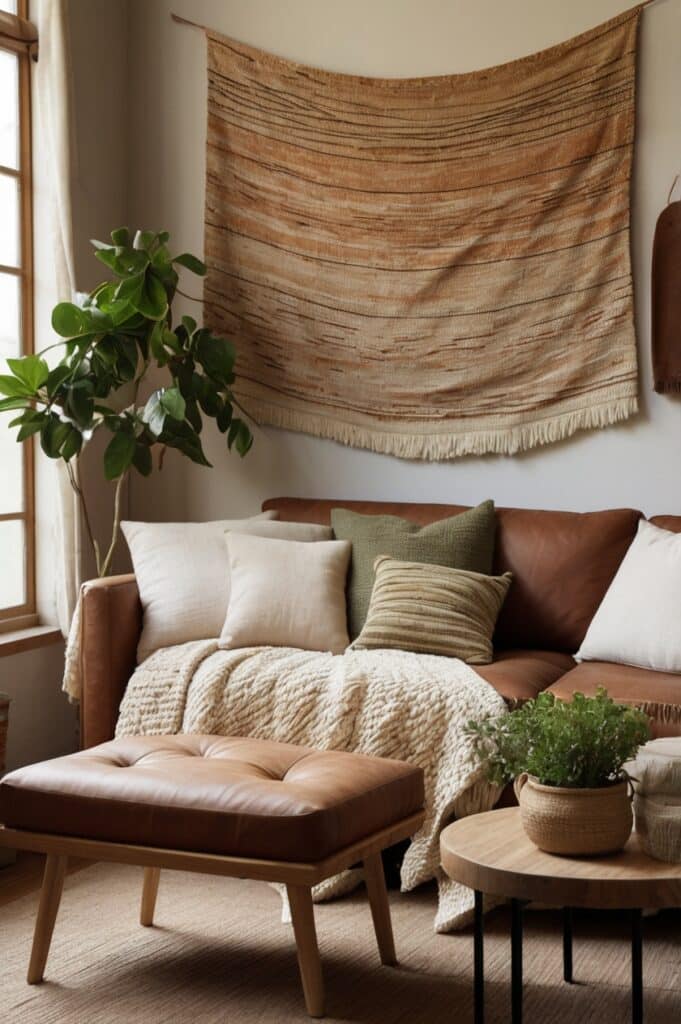
Large-scale woven tapestries bring unmatched textural richness and acoustic benefits to living spaces. They’re particularly effective in rooms that suffer from sound reverberation.
Traditional kilim rugs, contemporary woven wall hangings, or even vintage textile pieces mounted on rods create instant focal points with depth and character. The softness contrasts beautifully with the structured lines of most sofas. I recently sourced a stunning indigo mud cloth from Mali for a clients family room—the graphic patterns and slight irregularities of the handmade piece brought soul to their otherwise perfectly polished space.
Proper hanging is crucial; heavier pieces require substantial hardware, while lighter textiles can be mounted on decorative rods or even stretcher frames depending on your preferred presentation style.
20. Painted Mural or Color Blocking
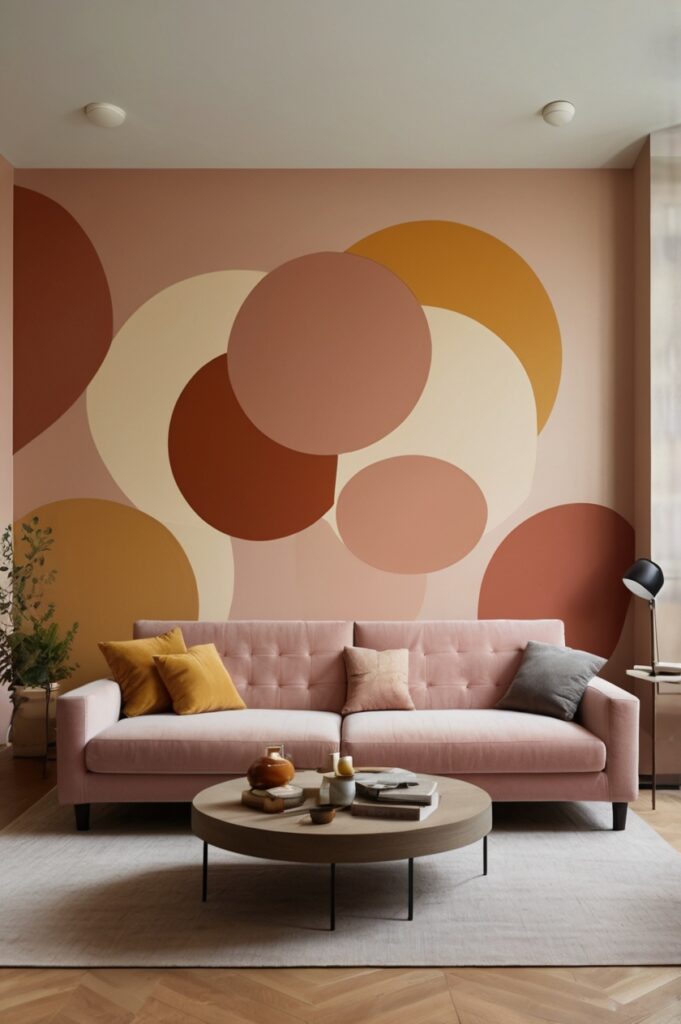
Sometimes the boldest solution is also the most budget-friendly. Strategic paint application creates custom impact without requiring additional decor elements.
Consider commissioning a local artist for a painted mural, creating a color-blocked geometric design yourself, or even just painting the wall behind your sofa in a contrasting color that stops at a deliberate height or width. The precision of the edges creates architectural definition even in builder-basic spaces. My client’s half-height charcoal paint application, topped with a slim wooden ledge, created a sophisticated headboard-like effect behind their living room sofa for under $100.
This approach allows complete customization of both color and scale to your specific space, creating truly bespoke results that complement your existing furnishings perfectly. Templates or painters tape ensure clean lines for DIY attempts.
21. Antique or Vintage Maps
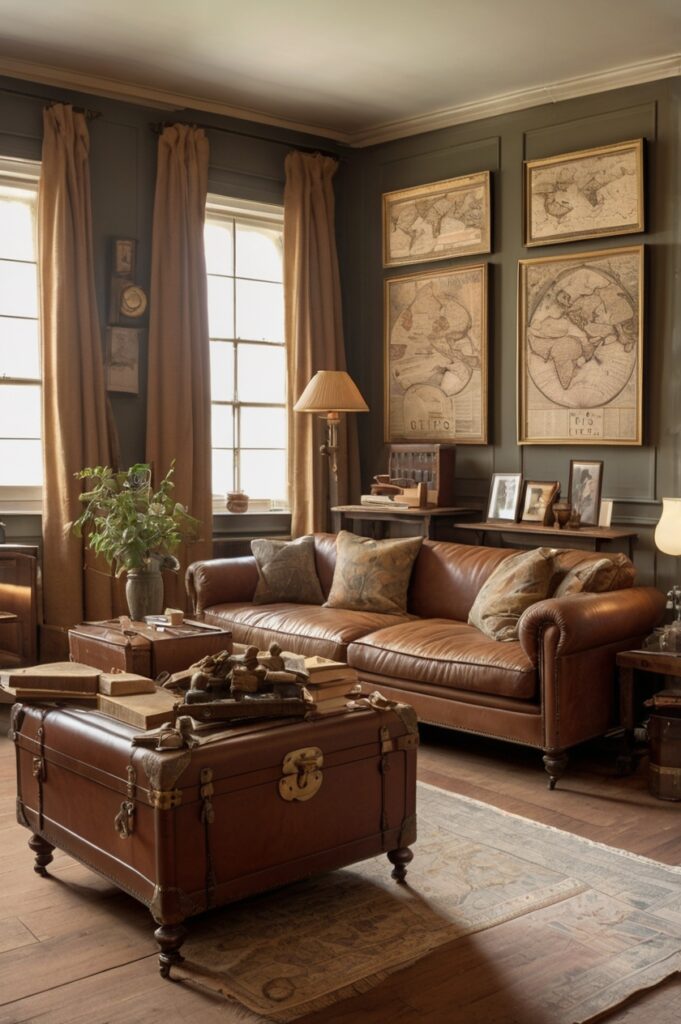
Maps bring intellectual interest, subtle color, and often personal meaning to living spaces. They’re perfect for travel enthusiasts or history buffs seeking decor with depth.
Vintage schoolroom maps, antique city plans, or nautical charts can be framed traditionally or mounted as pull-down scrolls for added character. The muted colors of aged paper work beautifully in both traditional and contemporary settings. I helped a client source maps of significant locations from their family history—their honeymoon destination, ancestral hometown, and current city—creating a deeply meaningful triptych above their sofa.
Consider the geographic locations carefully—choosing places with personal significance rather than random decorative selections adds a layer of storytelling to your decor that generic choices simply cannot match.
22. Leaning Art Shelf
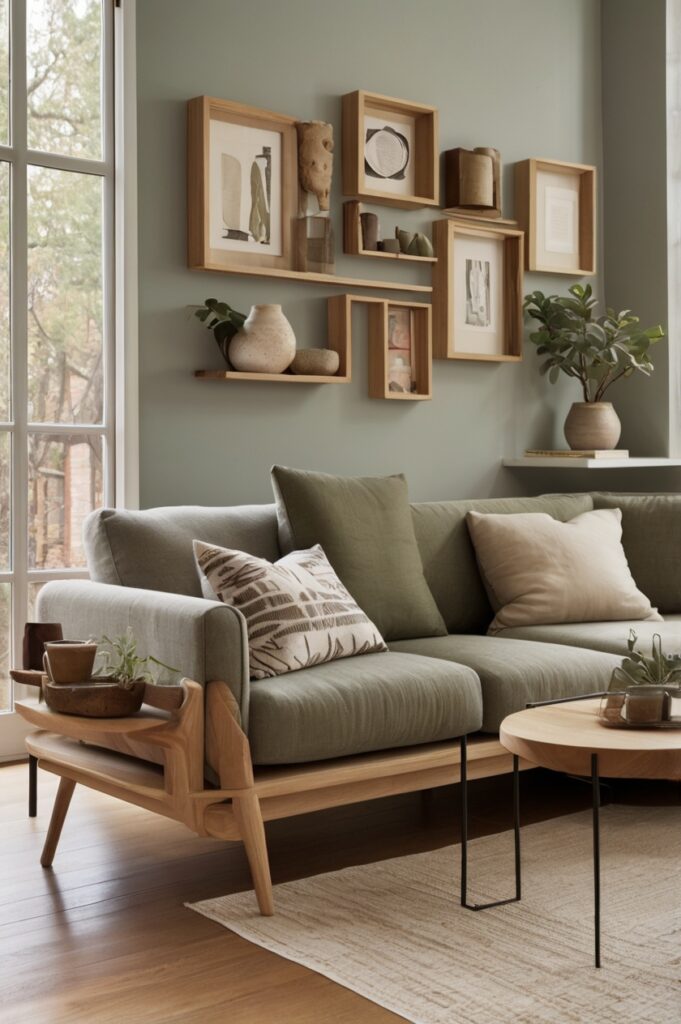
For the chronically indecisive or those who enjoy frequent changes, a picture ledge offers flexibility without multiple nail holes. This approach feels deliberately casual yet still intentional.
Install a substantial shelf or picture ledge approximately 12 inches above your sofa back, spanning most of its width. This creates a platform for displaying art, photographs, or objects that can be rearranged at whim. My clients constantly tell me how much they apprecate the seasonal flexibility their art ledge provides—from family photos during holidays to more abstract pieces during other seasons.
The layered approach, with some pieces standing in front of others, creates natural depth and a collected-over-time quality that feels less formal than traditional hanging arrangements. This solution works particularly well for renters or those hesitant to commit to permanent installation.
23. Suspended Hanging System
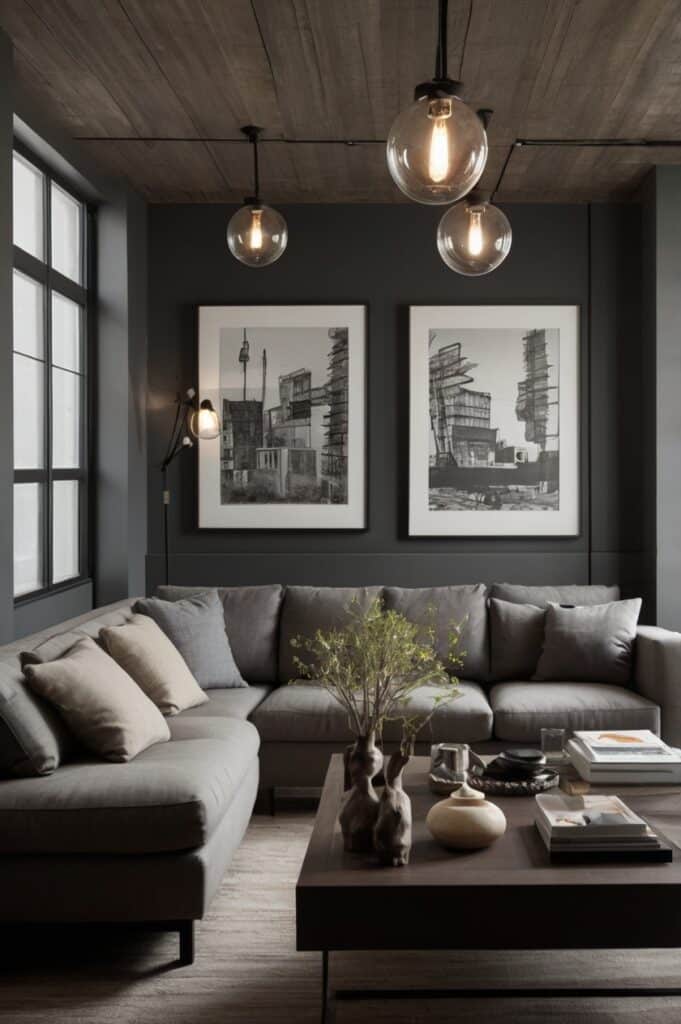
Gallery-style hanging systems bring flexible sophistication and professional polish to home art displays. They’re perfect for collectors who rotate pieces regularly.
Install track systems at ceiling height with adjustable wires that allow art to be hung at various heights without additional wall damage. Multiple pieces can hang from each wire, creating vertical arrangements that maximize display space. I installed this system for a client who rotates their photography collection seasonally—the ability to completely transform their space without tools or wall repair has been revolutionary for them.
These systems accommodate various weights and sizes of artwork, from small photographs to substantial canvases. The hardware can either be minimized for a clean look or highlighted as an intentional industrial element depending on your overall aesthetic.
Your sofa wall isn’t just blank space—it’s an opportunity to express your personality, add dimensional interest, and transform your entire living environment. The perfect solution balances proportion, personal meaning, and practical considerations while creating a focal point that enhances rather than overwhelms your daily experience of the space.
Remember that the best wall decor grows from authentic connection—whether that’s to places you’ve been, things you love, or simply colors and textures that bring you joy. Avoid generic solutions in favor of arrangements that tell your unique story. That wall behind your couch is waiting to become the most expressive part of your home—what will you say with it?

John is the founder of Stylo Trackers, a fashion blog dedicated to inspiring confidence through style. With a passion for timeless trends and modern outfit ideas, he helps readers express their individuality effortlessly. From 90s fashion to the latest styling tips, John curates content that makes fashion fun, accessible, and inspiring for everyone who wants to dress to impress.

